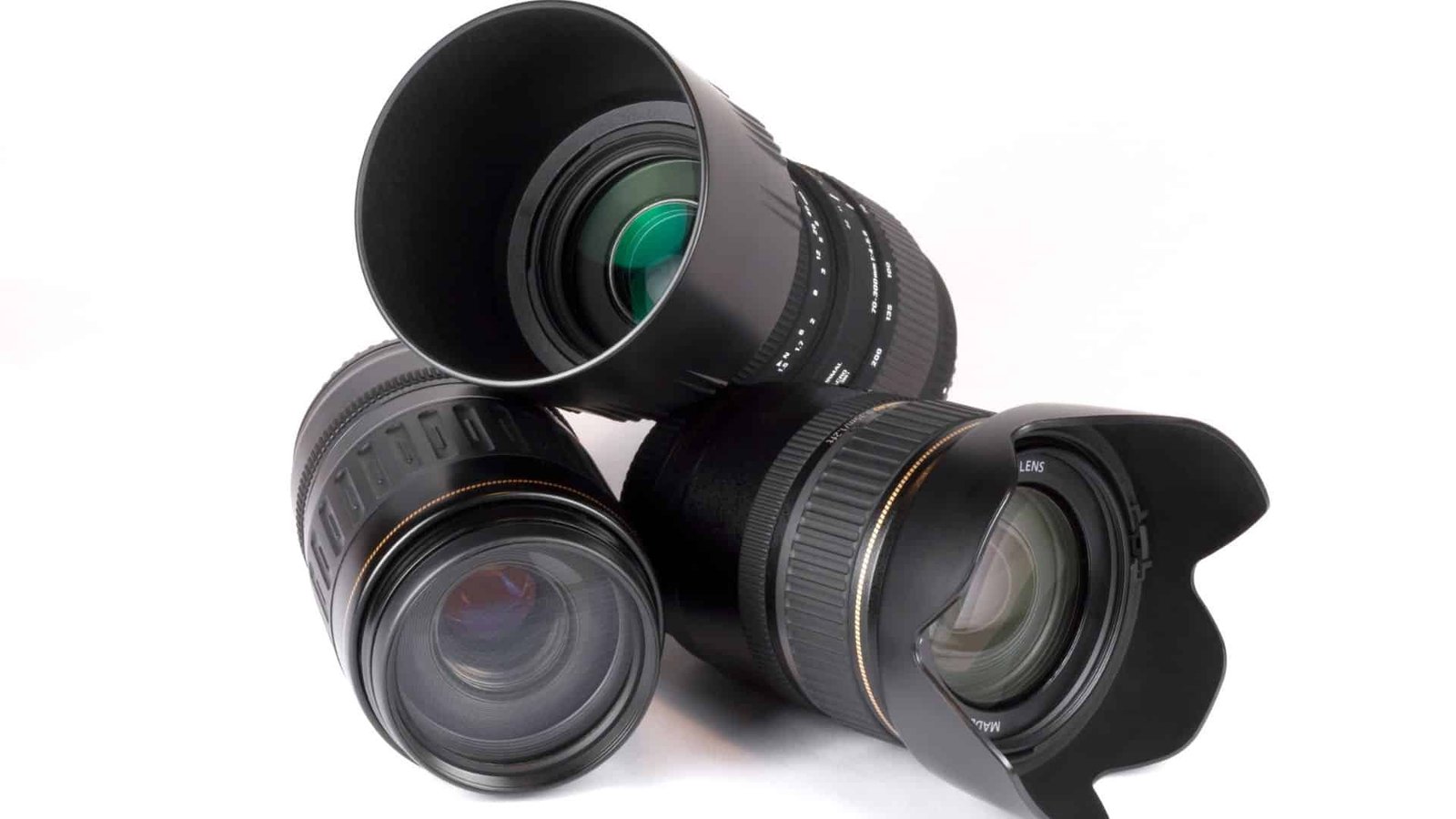The relationship between the circular shape of camera lenses and the square or rectangular shape of the photographs they capture is an intriguing aspect of photography. In this blog post, we will unravel the reasons behind this phenomenon, exploring the optical design of camera lenses, the role of image sensors, the influence of aspect ratios, the impact of tradition and mediums, and the interplay between practicality and artistic expression. By delving into these factors, we will gain a deeper understanding of why camera lenses are circular but pictures square or rectangular, unearthing the captivating intersection of science, technology, and art in photography.
Why Are Camera Lenses Circular?
Camera lenses are circular primarily because of how light and optics work. Here are the key reasons explained in detail:
1. Optical Principles:
1: Uniform Light Focus: Lenses work by bending (refracting) light rays to converge at a focal point. A circular shape ensures light from all directions is uniformly bent, minimizing distortions and aberrations. If the lens were a different shape, such as rectangular or square, the edges would introduce uneven light refraction, leading to inconsistent image quality.
2: Symmetry: Circular lenses allow for symmetrical light entry, which is critical for producing sharp and evenly illuminated images. This symmetry ensures that all parts of the image receive equal focus and brightness.
2. Ease of Manufacturing:
- Grinding and polishing a lens into a circular shape is simpler and more cost-effective than creating lenses in other shapes. Circular lenses can be mounted in rotating machinery during production, ensuring consistent quality. Irregularly shaped lenses would require more complex and expensive manufacturing processes.
3. Maximizing Light Capture:
- A circular lens captures the maximum amount of light for a given diameter. Other shapes would reduce the lens’s ability to collect light efficiently, leading to darker images or requiring larger, bulkier lenses to compensate.
Why Are Pictures Rectangular or Square?
The shape of pictures is dictated not by the lens but by the image sensor or film inside the camera. Here’s why pictures are rectangular or square:
1. Sensor Design:
- Modern digital cameras use rectangular sensors because they are easier to manufacture and fit into a compact camera body. Silicon wafers, used to create image sensors, are naturally sliced into rectangular shapes to maximize material usage.
- Rectangular sensors align well with popular aspect ratios like 4:3, 3:2, or 16:9, which are standard for screens, prints, and other media formats.
2. Historical Film Formats:
- In film cameras, rectangular film strips were the standard because they were easier to produce, transport, and process in labs. This convention carried over to digital cameras, ensuring compatibility with existing media standards and user expectations.
3. Human Vision and Practical Composition:
- Rectangular images match the horizontal orientation of human vision, which is naturally wider than it is tall. This format provides a more immersive experience and accommodates both landscape and portrait compositions effectively.
- Square images, while less common, are used for specific artistic or practical reasons, such as in medium-format cameras or certain social media platforms like Instagram.
4. Efficiency in Cropping:
- A circular image projected by the lens would waste a significant portion of the sensor area if the sensor were circular. By using rectangular sensors, manufacturers ensure that the maximum amount of useful information is captured, reducing data redundancy and optimizing storage and processing.
How Do Circular Lenses Work with Rectangular Sensors?
The circular lens projects an image onto the camera’s sensor, but the projection forms a circular image called the image circle. The camera sensor is positioned within this circle and captures only the rectangular portion of the image. Let’s dive deeper into this:
Key Concepts:
Image Circle:
- The image circle is the area illuminated by the lens on the sensor. The diameter of the image circle must be large enough to cover the entire sensor. If the sensor extends beyond the image circle, it will produce dark corners, a phenomenon known as vignetting.
Crop Factor:
- In smaller sensors, like those in crop-sensor cameras, only a smaller portion of the image circle is captured, effectively cropping the image compared to a full-frame sensor.
Optimal Design:
- Lenses are designed to ensure the image circle matches the sensor size to maximize image quality and minimize optical issues.
Why Not Use Square Lenses or Circular Sensors?
Using square lenses or circular sensors might seem logical to match the shapes, but there are several reasons this isn’t practical:
1. Square Lenses:
- Creating square lenses would introduce significant optical challenges. Light refraction and focus would become uneven near the edges, requiring complex corrections.
- Manufacturing square lenses would be costlier and less efficient, as they cannot be rotated or polished as easily as circular lenses.
2. Circular Sensors:
- Circular sensors would waste a large portion of their area. For example, the corners of a circular sensor would not align with standard rectangular aspect ratios, leaving unused portions that contribute nothing to the final image.
- The storage and processing of circular images would require additional cropping and introduce inefficiencies.
Applications of Circular Frames:
While most cameras crop the image circle to a rectangle, there are niche applications where the full circular frame is used:
- Fisheye Photography: Fisheye lenses produce highly distorted, circular images that capture an ultra-wide field of view. These are popular in artistic photography and scientific applications.
- Scientific Imaging: Circular images are sometimes used in astronomy, microscopy, and other fields where the shape of the image isn’t as important as capturing the maximum field of view.
The Beauty of the Design:
The combination of circular camera lenses and square pictures represents an elegant compromise between optical performance and practical usability. Circular lenses optimize light capture and image quality, while rectangular sensors and pictures fit seamlessly into how we view and use images in the real world. This design isn’t just a matter of convention; it’s a thoughtful balance of science, engineering, and human creativity. The next time you snap a photo, take a moment to appreciate the ingenious design that goes into turning light and glass into a timeless image.
The Transformation from Circular to Square/Rectangular:
Optical Process:
- When light passes through a circular lens, it creates a circular image on the sensor or film. However, since most sensors are rectangular, only a portion of this image is utilized. This cropping process helps eliminate peripheral distortions that often occur at the edges of circular images.
Cropping and Composition:
- Photographers often work with this natural circularity by composing their shots within a rectangular frame. They strategically crop images to enhance visual impact while maintaining a balance between the circular light captured and the rectangular format displayed.
Role of Image Sensor or Film:
- The rectangular shape of sensors or film allows for efficient storage and display while also facilitating better image quality by excluding less sharp areas from the circular image produced by the lens.
Challenges and Artistic Choices:
Vignetting:
- Vignetting is a common issue where corners of an image appear darker due to lens limitations. This occurs because circular lenses project onto rectangular sensors, leading to uneven light distribution.
Creative Solutions:
Photographers employ various techniques to manage these challenges:
- Wide-Angle Lenses: These can help minimize vignetting effects.
- Tilt-Shift Lenses: Allow for creative adjustments in perspective.
- Digital Editing: Post-processing techniques can correct vignetting or enhance desired effects.
Square Format Photography:
- Some photographers embrace square formats through specific cameras like Polaroids or certain digital models that maintain this aspect ratio. This choice often reflects artistic intent rather than practical necessity.
The Curious Case Explained:
The curious case of why camera lenses are circular but pictures square or rectangular photographs stems from practical and optical necessities. Circular lenses focus light evenly onto rectangular sensors, utilizing the central, sharper portion of the lens to optimize image quality. The rectangular shape of sensors aligns with common display and print formats, offering convenience and efficiency. Technological advancements, such as improved lens coatings, precision optics, and sensor design, have bridged any perceived mismatch. These innovations ensure minimal distortion and maximum sharpness, empowering photographers to harness the strengths of both shapes while delivering visually compelling results. This synergy exemplifies the balance between artistic intent and engineering precision.
Conclusion Of Why Are Camera Lenses Circular But Pictures Square:
In summary, photography represents an intricate balance between art and science. The relationship between circular lenses and rectangular images exemplifies this harmony—each element plays a crucial role in producing compelling visuals. As photographers navigate these dynamics, they find opportunities for creativity within constraints, reflecting on how design influences function in their artistic endeavours. This interplay ultimately enriches our understanding of photography as both a technical discipline and a profound form of expression.
FAQs
Q1: What is the exposure triangle?
Ans: The exposure triangle is a fundamental concept in photography that consists of three elements: aperture, shutter speed, and ISO. These three settings work together to determine the exposure of an image. Adjusting one element affects the others; for example, increasing the aperture (lower f-stop number) allows more light in, but may require a faster shutter speed or lower ISO to maintain proper exposure.
Q2: What is the difference between RAW and JPEG files?
Ans: RAW files are unprocessed image files that contain all the data captured by the camera’s sensor, allowing for greater flexibility in post-processing. They are larger and retain more detail compared to JPEG files, which are compressed and processed images that take up less space but offer less editing latitude. Photographers often choose RAW for its quality, while JPEG is preferred for quick sharing and smaller file sizes.
Q3: How do I achieve sharp focus in my photographs?
Ans: Achieving sharp focus involves several techniques, including using appropriate autofocus settings, selecting the right focal point, and ensuring proper camera stability. Many photographers use methods like back button focus or manually selecting focal points to enhance sharpness. Additionally, using a tripod can help minimize camera shake, especially in low-light conditions.
Q4: What is white balance, and why is it important?
Ans: White balance refers to the adjustment of colors in an image to ensure that whites appear neutral and other colors are true to life. It compensates for different lighting conditions (e.g., sunlight, tungsten) that can cast color tints in photos. Proper white balance is essential for achieving accurate color reproduction and can be adjusted manually or set to auto on most cameras.
Q5: What gear do I need to start photography?
Ans: Beginners are often advised to start with a versatile lens, such as a 50mm prime lens, which is affordable and offers excellent image quality. As photographers progress, they may explore various lenses suited for specific styles, including wide-angle or telephoto lenses. Ultimately, the choice of gear depends on personal preferences and the type of photography one wishes to pursue.

